I recently posted a video over on my TikTok about how to choose the best yarn for knitting socks, and one of the comments got me thinking. It started with the idea that “knitting is such an expensive hobby.”
That spun off into a really good discussion on Threads and Twitter. Most of the people I heard from had a similar perspective to mine: you can make knitting a ridiculously expensive hobby, but it doesn’t have to be.
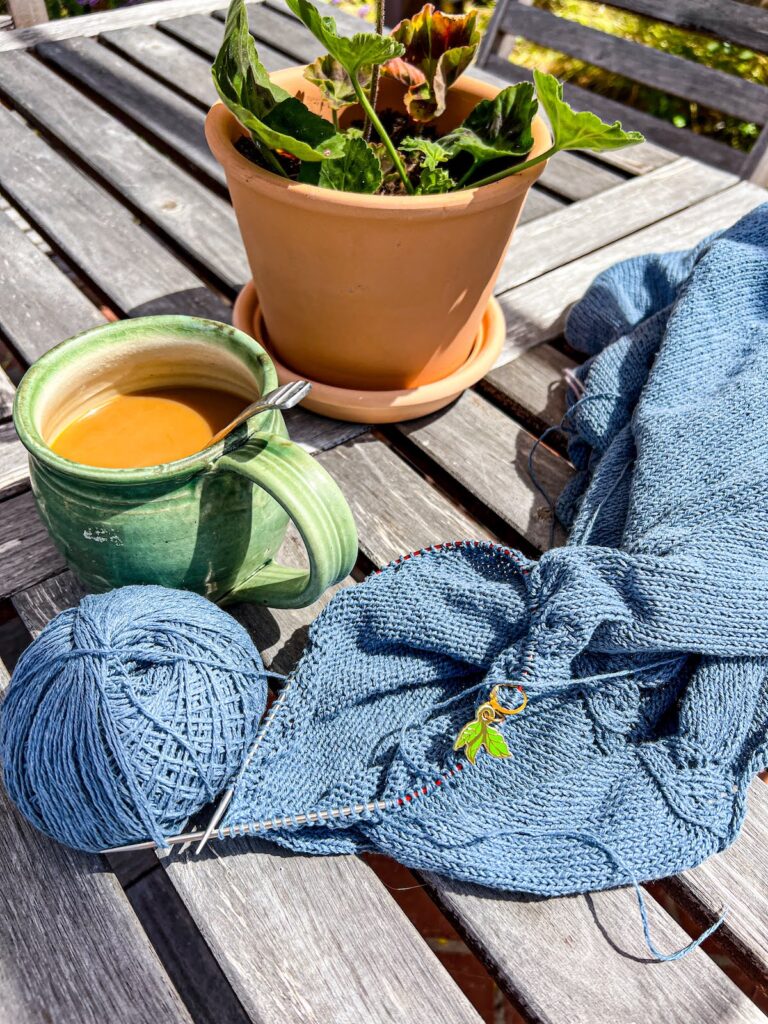
And the truth is, I started knitting when I was a student. I had no job and was living off of student loans. I used all sorts of tips and tricks to keep my costs down, even on larger projects like garments and blankets.
So I figured this would be a great chance to share some of those tips and tricks here. If you have limited disposable income, I hope this helps you find ways to keep enjoying your fiber arts hobbies.
Tip #1: Check out knitting books from the library
One of the best ways to reduce the cost of any hobby is to borrow the equipment you don’t need to buy. A library can be an incredible resource for a knitter.
This option used to be very location-dependent, especially if you were in a small town with a small local library. Nowadays, though, there are lots of libraries that will issue non-resident cards. This can give you access to a whole host of eBooks. You can read these on your phone without having to buy a separate Kindle or Kobo or whatever.
If you’re in a larger city or have a local library that really supports makers, you can also find some good physical books in their collections. Even my local library, which serves a comparatively smaller area/population, has a great selection of knitting books with stitch dictionaries, technique exploration, themed patterns, and more.
And finally, your library may have a network relationship with other libraries. This would allow you to take advantage of interlibrary loans. Doing so can significantly expand the catalog available to you. If you’re curious, swing on by your local library and talk to a librarian about the resources they offer.
Tip #2: Take advantage of bulk discounts
Some yarn shops, like Webs, will offer bulk discounts. The more you buy, the greater the discount. This can help bring down the cost of larger projects. If you know you’re going to be knitting several projects over the coming months, you can also buy yarn for all of those projects at once to take advantage of the discount that way, too.
There are also several indie dyers who offer discounts for larger orders, especially as a way to combat the increased cost of knitting garments for larger knitters. If you are knitting a larger size garment, check out Coast to Coast Yarn Co. and Dyeing Wishes Yarn Co. Autumn Eden-Goodman of the Size Inclusive Collective also maintains an excellent list of indie dyers and others who offer these sorts of discounts.
Tip #3: Experiment with budget yarns
I love knitting with luxury yarn, but that isn’t always in the budget. Luckily, there are a lot of great, less expensive yarns out there that can make absolutely gorgeous knitting projects.
I’m a sock knitter, so that’s primarily where I focus on budget yarns. Based on my experience, some of the best budget yarns for socks are Regia 4-ply, West Yorkshire Spinners Signature 4-ply, and Knitpicks Stroll. They allow me to knit a pair of socks for much less than I’d ordinarily pay for hand-dyed yarn. These yarns are also still primarily made of natural fibers, which I strongly prefer for sock knitting.
Note: a lot of knitters will also recommend Patons Kroy sock yarn. While I think that’s actually a good yarn, it’s also usually much thicker than the average sock yarn. If you decide to use that one, you’ll likely need to make some gauge adjustments.
It’s also important to know that inexpensive yarn doesn’t have to be cheap yarn. By that I mean it doesn’t have to be poorly made, scratchy, uncomfortable to work with, or ill-suited to its purpose. Budget-friendly yarns can still be well made. You don’t have to settle.
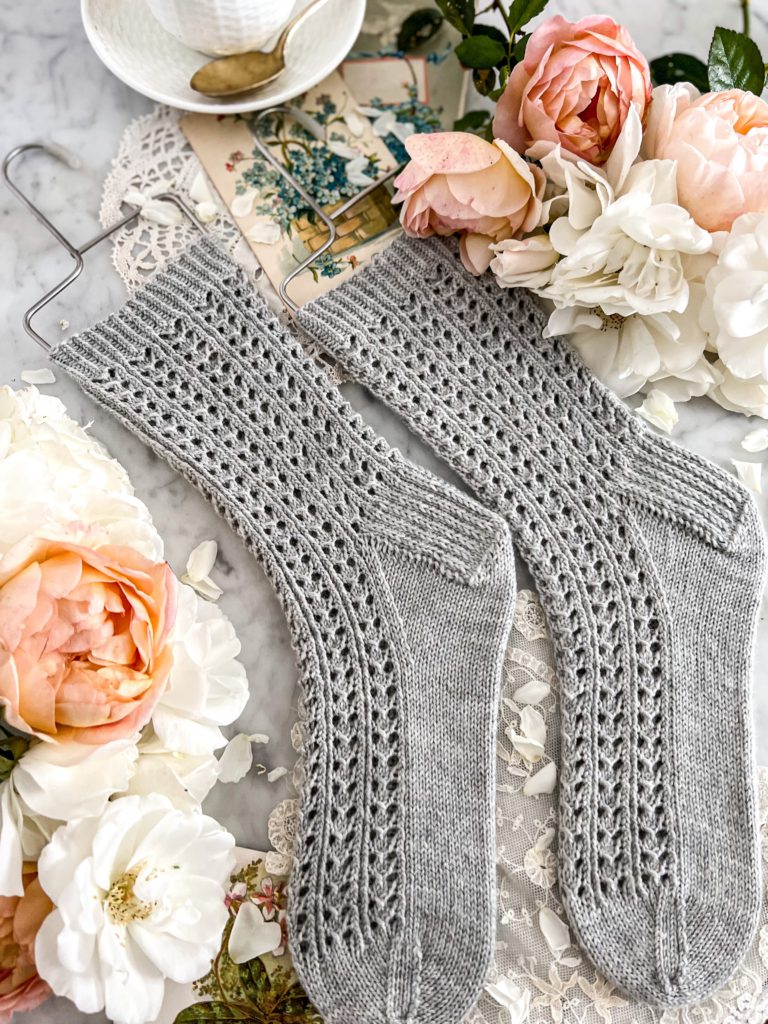
Tip #4: Try free patterns from trusted sources
A lot of us have been burned by bad, free patterns. It’s a painful experience, and many knitters (reasonably) have decided they won’t use free patterns anymore because of it.
But sometimes, free patterns can be a great resource. For example, my Socktober Socks and Littoral Hat are both free, but they’ve been tech edited just like my paid patterns. I offer them as a community resource. They’re also a way for people to try out my patterns to see if our styles mesh well.
Many designers will do similarly. If you see someone doing work you like, check out their website. They may offer a free pattern or two on their blog. They might also offer a code to download a free pattern of your choice if you sign up for their newsletter.
If you sign up for the newsletter, I encourage you to stick around. Most of us try hard to make our newsletters a helpful, engaging resource for you.
Tip #5: Keep an eye on estate sales/thrift stores
Many dedicated knitters often reach a point jokingly referred to as SABLE, or Stash Accumulation Beyond Life Expectancy. When that happens, knitters often end up downsizing their stash, either by choice or by necessity.
Depending on how the downsizing happens, stash might be sold in several different ways. You’ll usually see it as part of an estate sale or donated to a local thrift store, church rummage sale, charity auction, or something similar. The people setting the prices for these sales don’t always know the original purchase price for many of these yarns. As a result, you can often find gorgeous hand-dyed yarns for the same price you’d pay for budget yarns.
This option does require some patience and a bit of luck. The more you check thrift stores and estate sales, the more likely you are to get lucky one day. You can also find lots of other craft supplies for your projects, like buttons, elastic, knitting needles, crochet hooks, and more.
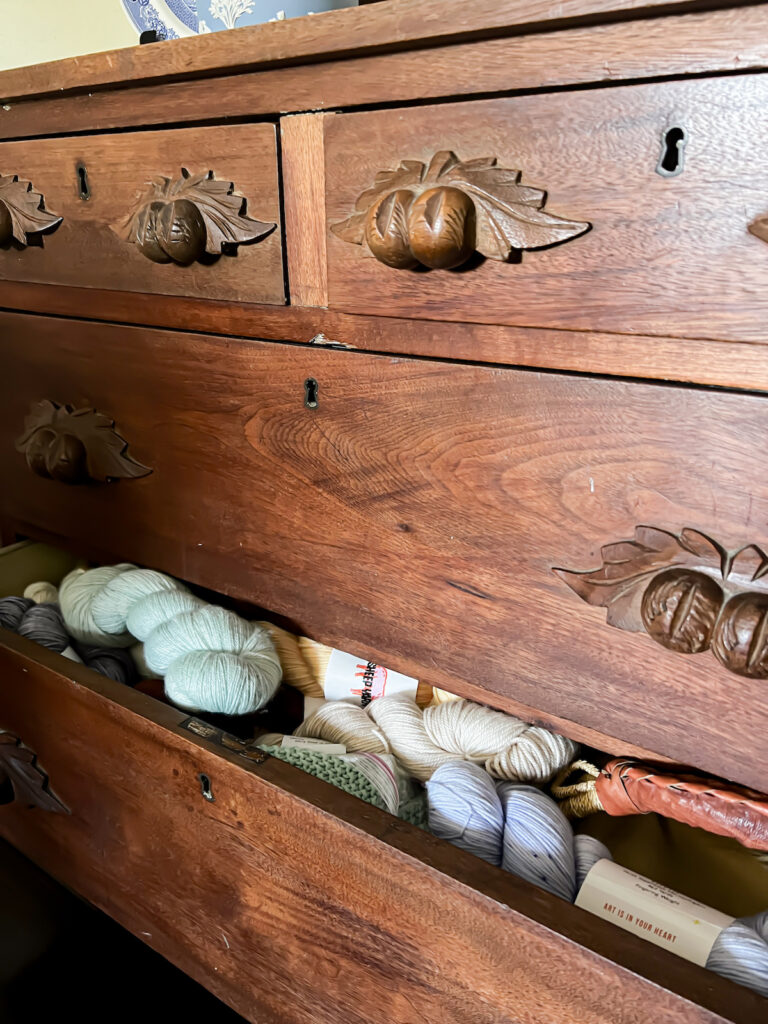
Tip #6: Join some yarn buy/sell groups
Like Tip #5, above, buy/sell groups are a great place to find good quality yarn at a reduced price. There are groups on Ravelry, Facebook, and other platforms that are specifically focused on yarn buying and selling. You can also join a local group that’s a little less targeted but might have options you can easily pick up instead of paying for shipping.
For something similar to a buy/sell group that’s a little less chaotic, my friend Anastasia runs Yarn for the Birds. It’s an online second-hand yarn shop where knitters can donate their unused stash yarns for resale. All proceeds benefit Anastasia’s wildlife bird rehabilitation work. Buying yarn from a store like this lets you filter the yarn ahead of time while supporting a good cause.
Tip #7: Repurpose your own old knits
Many knitters have an old project or two that’s just sitting in a drawer, not getting worn. Maybe it doesn’t fit quite right. It could be the style turned out to be something you don’t actually like. Perhaps you have something else really similar that you tend to use more. Whatever the reason, you have three options: start using it somehow, let it keep sitting there without being used, or frog it and use it for something new.
I often do this with projects that just didn’t turn out how I had envisioned. I always buy yarn I love, but when a project doesn’t work for me, that yarn is essentially wasted. I’m a firm believer that knits should be used, so this just isn’t a tenable scenario for me.
So every now and then, I hold a “fix it or frog it” day for myself. If the knit thing isn’t worn because something’s wrong with it that I can easily fix, I make that fix. Otherwise, I frog the project and reuse the yarn for something else.
And the best thing about this approach? Based on my very sophisticated accounting techniques, this yarn is essentially free for the next project. Knitting math!
Tip #8: Buy discontinued yarn
Yarn companies will often discontinue yarn because the colors are from a few seasons ago, they’ve changed the bases they want to offer, or they’re moving in a new aesthetic direction. To clear out the old yarns, they’ll host a massive sale or sell the stock to another company who will resell them (like the aptly named discontinuedyarns.com).
The thing is, there’s nothing wrong with these yarns, strictly speaking. If you like the color, the construction, and the fiber content, who cares if it’s from a few seasons ago? And because you’re a person, not a brand, you don’t have to worry about innovating or rebranding or keeping up with changing fashions. You can just knit with what you like, whether it’s brand new or from a decade ago.
Your local yarn shop might also sometimes decide to stop carrying certain yarn brands or bases. If that happens, they might discount the yarn to sell it quickly. Check in with them periodically to see if they’re planning to clear inventory.
Tip #9: Stock up during sales
This option requires a little planning, but it can be a great way to save a lot of money. If you have a list of projects you are planning to knit, and you know what yarns you want to use for those projects, you can keep that list handy and stock up when yarn retailers have large sales. This means you’ll also need to save some money for the yarn in advance. The tradeoff, though, is usually worth it.
If you have a local yarn store, be sure to sign up for their email newsletter so you don’t miss announcements for any upcoming discount events they might have. Be sure to do the same for the indie dyers and online yarn shops you like, too. Keeping an eye on their newsletters is the best way to make sure you don’t miss a good deal. This is especially true as Instagram and other social media platforms become less and less reliable forms of communication.
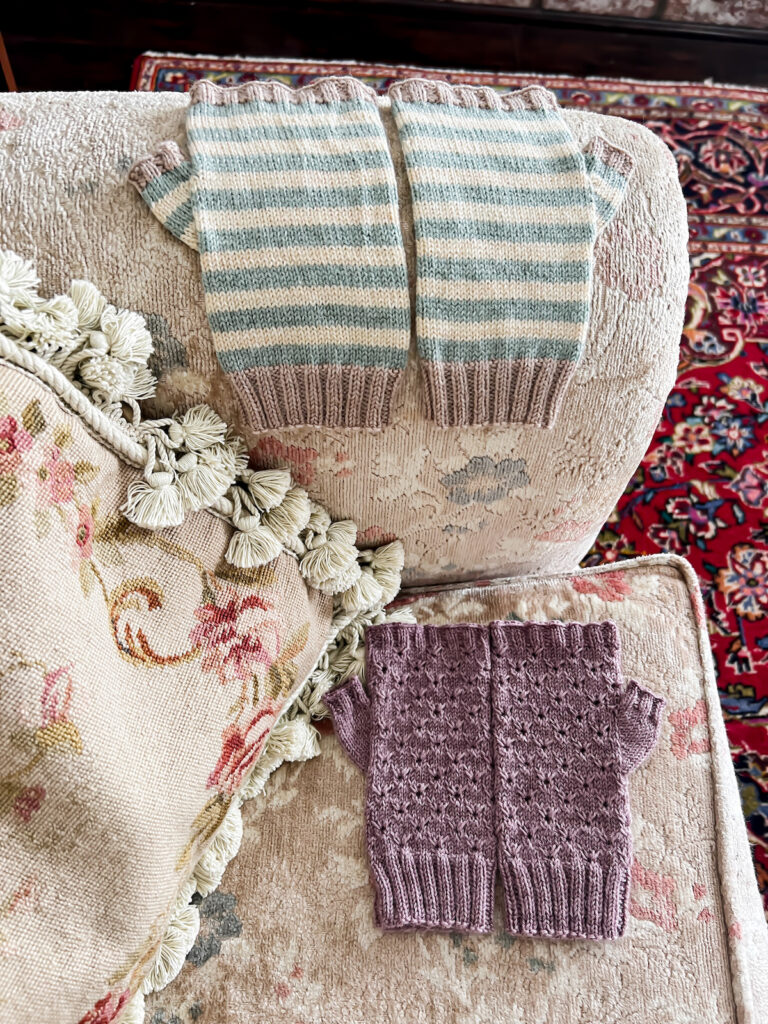
Tip #10: Repurpose machine-made items
A lot of knitters love to prowl thrift stores and garage sales for mass-produced sweaters made from natural materials that are badly out of style. They’ll buy a thrift store sweater for a low price, unravel it, and use the yarn for something new. These old sweaters can often give you several balls of yarn when you’re done. Even if the sweater is on the small side so you don’t have enough yarn to make a new sweater from the material, you might be able to make a scarf or a couple hats.
This strategy has gotten more challenging in recent years. More and more mass produced sweaters are too thin to unravel or are made with material that doesn’t hold up well under frogging and reknitting (especially if it’s a flimsier acrylic yarn). Even so, there are still gems out there that can be put to good use.
Frogging machine-made items is also one of the best options for getting buttons for new projects without spending as much money. New buttons alone can cost as much as an entire sweater at a thrift store, so you can get two things you need for the price of one.
Tip #11: Knit projects in a finer gauge
This tip is my favorite way to make my budget stretch. If you’re buying from indie dyers, generally a skein of fingering-weight yarn (400-ish yards) and a skein of DK-weight (230-ish yards) or worsted-weight yarn (210-ish yards) are going to cost about the same. To put it bluntly: if you can get double the amount of yarn for about the same price, it makes sense to work in those finer weights of yarn. That way, you get more hours of knitting out of each skein.
If you think about it in the sense of how many dollars you pay for each hour of knitting, the thinner yarns are going to give you way more bang for your buck than a thicker yarn will. That’s a big part of why I got so into knitting socks and shawls. If you have $60 for yarn for the month, spending it on two skeins of finer yarn and getting 800 yards to knit with is a great option to stretch the budget.
Tip #12: Get comfortable substituting yarn
A lot of knitting patterns include a recommended yarn. That yarn might not be accessible for a variety of reasons, though. Whether it’s a yarn that’s not available in your country, a yarn that uses a fiber you can’t wear, or a gorgeous hand-dyed yarn that’s just too expensive for your budget, it’s easy to end up in a situation where the yarn used in the pattern isn’t the yarn you use for your project.
But with yarn substitution, that doesn’t matter. The more you understand about how to swap one yarn for another, the more easily you can keep the costs of your project down by using a less expensive yarn.
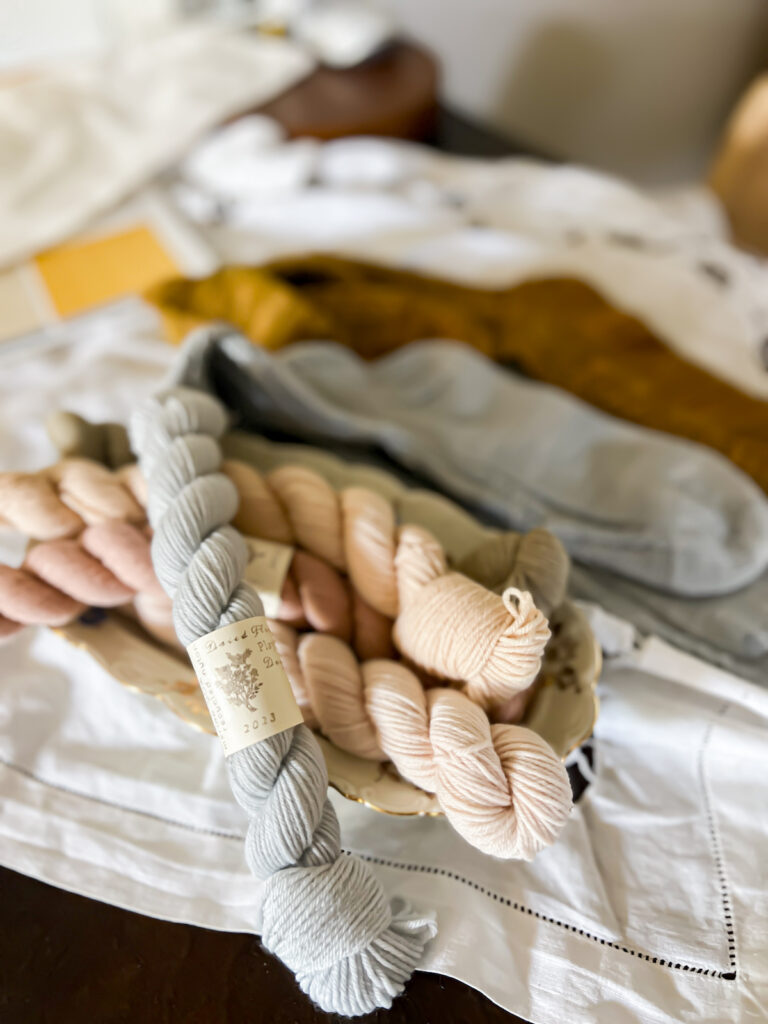
Tip #13: Embrace Scrappy Projects
Yarn can get expensive. As a result, it makes sense that you want to use up every last bit of it you can. Unfortunately, a lot of knitting projects only use part of a skein. Those projects then leave you with lots of leftover bits and bobs. That’s real money you spent on that yarn, sitting unused in a bag or cupboard.
But with scrappy projects, you can use all those leftovers. It’s part of why I love my mitered square blanket I’ve been working on. The blanket uses up all the leftover sock yarn from my various sock designs.
Stranded colorwork is also a great way to use up small bits of yarn, as are small projects like fingerless mitts and little pouches. Holding yarn double can help you reach gauge on a project you might not otherwise have the yarn for and will help you use up even more of those leftovers. Using your little leftover bits will help eke out every last cent of enjoyment from your yarn purchases.
Let’s stay connected!
Join my newsletter for 30% off all new releases, regular updates with helpful tips and tricks, first crack at registration for upcoming workshops, exclusive discounts, and more.
Prefer to read without ads? Join my Patreon, which starts at just $1 a month!
Join the A Bee In The Bonnet Facebook Group to participate in knitalongs and other fun community events
Come hang out with me on the A Bee In The Bonnet TikTok
Follow along on the A Bee In The Bonnet Instagram
Get inspired via the A Bee In The Bonnet Pinterest

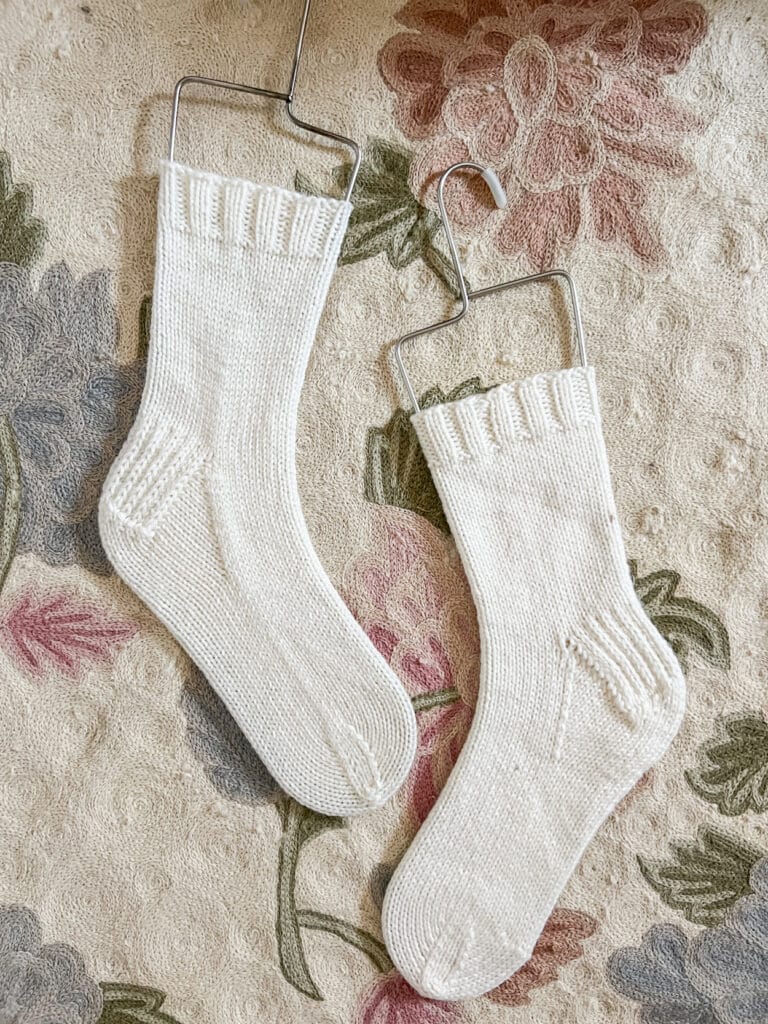
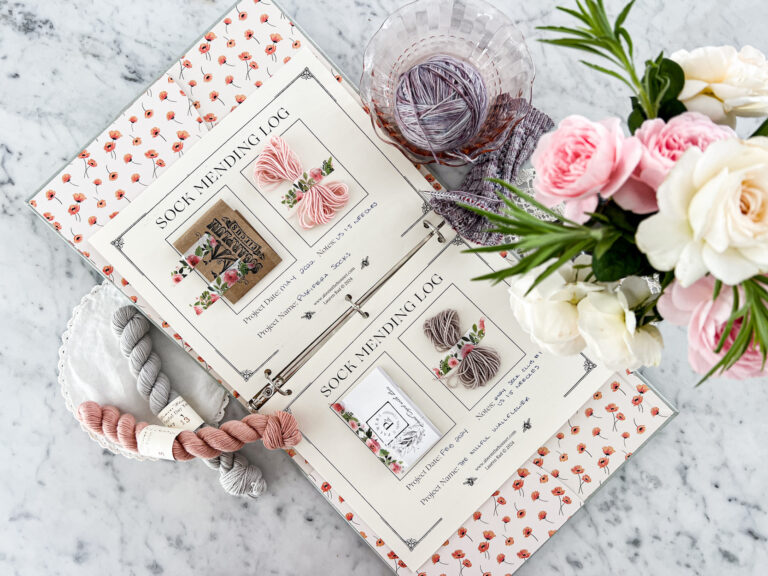
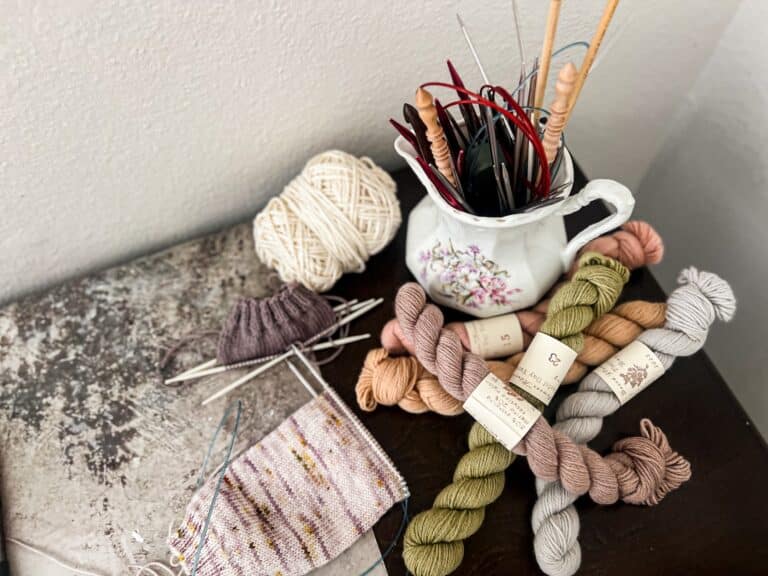
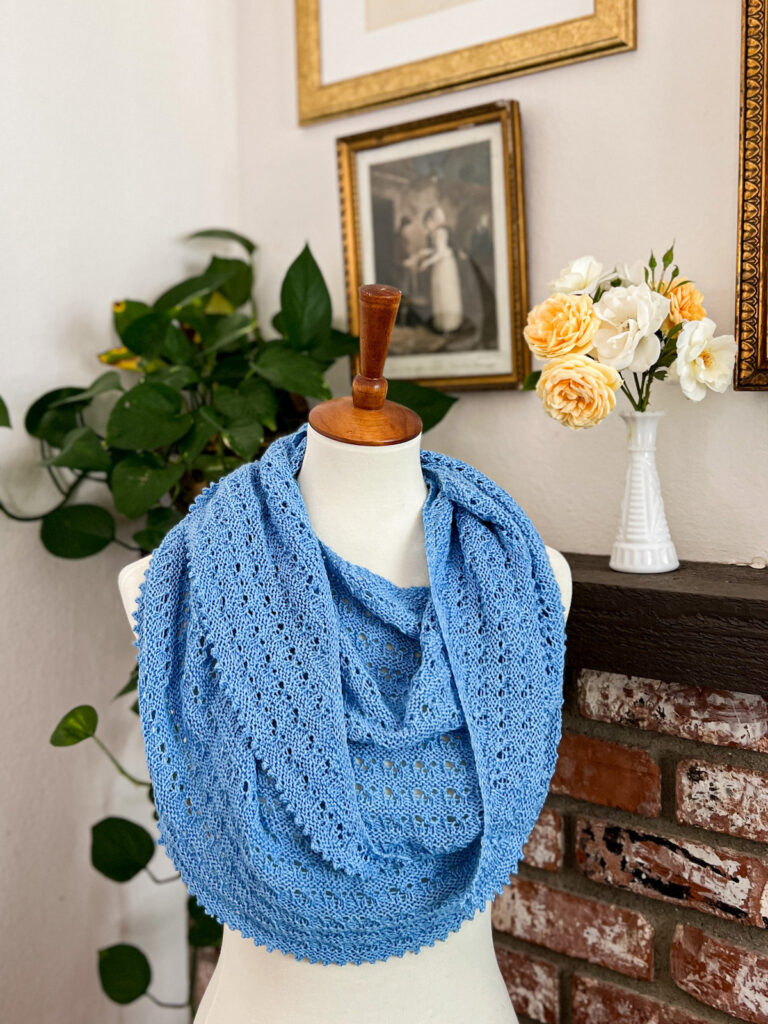
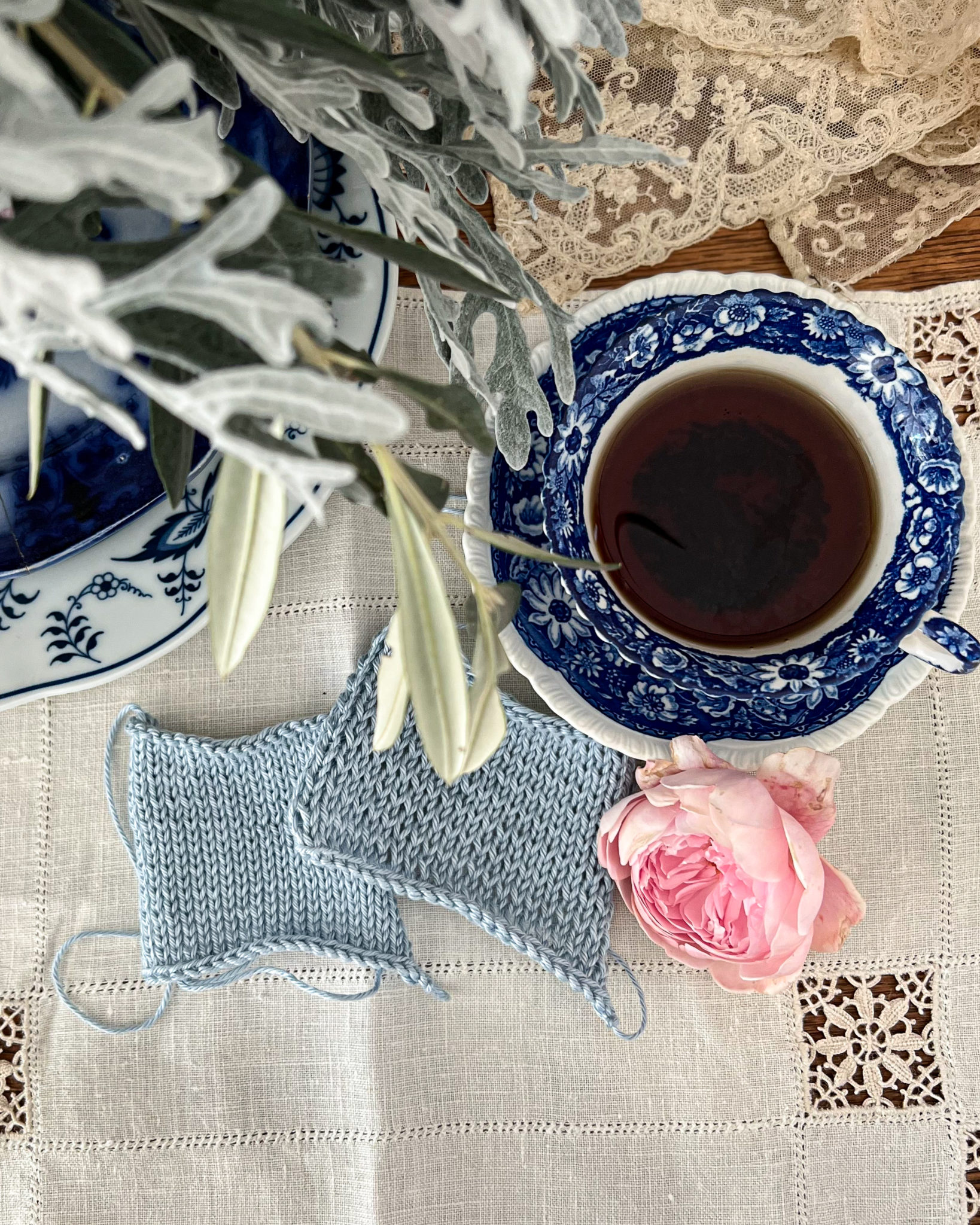
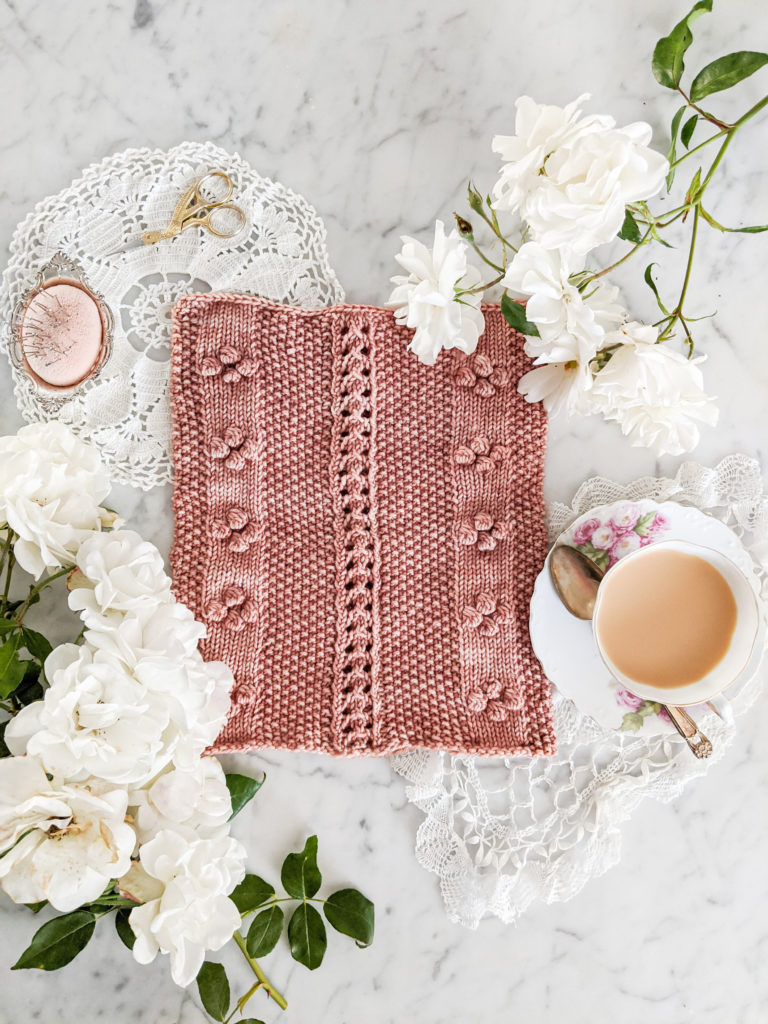
This is a great, helpful post. Thank you for the ideas xx
I’m so glad to hear it was helpful for you!
Discontinuedyarn.com is not viable.
Thank you for flagging that! I missed an s in the address. It’s been corrected.
I found a great haul of sock yarn on Etsy, from a vendor who sold vintage items acquired from estate sales. The yarn was from the 1950s ,but had been stored properly, and was in perfect shape. She threw in some that had been wound into balls for free, since she wasn’t sure how to price them, and they were not labeled.
It is a bit thinner than modern sock yarns, reminding me of the 4-ply English sock yarns I used in the 1980s. It was okay knitted on 2mm needles ,but wears better when knitted on 1.75mm.
It’s fun to tell people that the wool in my socks is as old as I am.
Oh, what a neat find!
That’s a great post, thank you. I do shop charity stores and look for items to unpick and rewind – I assume that is what you mean by frogging? That’s new to me. but some of the other ideas and links give me new options, which is fantastic. Thanks
Oh yes, frogging is a silly term for ripping out your knitting because “rip it, rip it” sounds like what a frog would say.
I’m so happy I came across your article, great ideas and I’ve signed up for your newsletter. I look forward to future posts.
I’m thrilled it was helpful for you! Welcome aboard.
Pinterest is an amazing source for stitches. Yes, just stitches. If you can count, you can incorporate stitches of your liking into a basic sock pattern. If the number of stitches in your sock don’t accommodate the pattern of your liking, just think on it. Where there’s a will there’s a way. It will come to you! If you have to manipulate the pattern, remember, there are no pattern police. Once you learn how to make the necessary modifications I guarantee you, money invested in sock patterns will significantly diminish! And it’s So-o-o much fun!
That’s how I started to learn to design! Modifying existing patterns, changing a few bits here and there, swapping out stitch motifs. It’s like learning to ride a bike with training wheels.
Some very good advise lots of great tips!!
Thanks! I’m glad it was helpful.
Hi
I’m not a knitter, but I would like to be someday. I have a question for you, what does 2 ply & 4 ply etc. mean. How do u know what type of yarn to use for different clothing.
Just Asking
Great question! This is actually a complicated enough topic that I think I’ll need to write a post about it. Watch this space–I’ll try to get to it next week.
There have been times I’ve had to ditch yarn quickly so charities have gotten beautiful skeins! Also knitting needles. Take a look at your local Goodwill, and such every so often . Also I’ve seen interesting yarn at the Dollar Tree, drugstores, and thrift stores! Combining two or three yarns can make interesting textures and colors. Now I’m preparing to move and a lot of yarn has to find another home! I can’t possibly knit it all before my hands fall off.